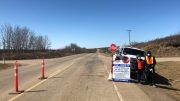By Jake Cardinal
“If there’s no money coming in, how do you justify paying people?
You can’t.”
– A First Nation Development Fund Director
On May 15, nearly two months later, the casinos are still closed.
There is no denying that the closures were justified due to unforeseeable health issues but the impact of this decision on First Nations is far reaching. The Alberta Government receives $1.4 Billion annually from these casinos and other lotteries so the shortfall will surely be felt by Alberta’s already struggling economy (in April 2020, Alberta’s seasonally adjusted unemployment rate was 13.4%, up from 6.7% in April 2019). However, the impact will be devastating to all First Nations across the province.
I sat down with a Development Fund Director who represents one of Alberta’s First Nations (who wished to remain anonymous) to help explain why.
The position of Development Fund Director involves allocating First Nation Development Fund (FNDF) money to different projects and programs throughout the Nation.
“First Nations entered into an agreement with Alberta Liquor and Gaming Commission,” said the Fund director, which allowed First Nations to build casinos on reservation land.
There are currently 5 Indigenous owned-and-operated casinos in Alberta:
– Stoney Nakoda Resort & Casino (Stoney Nakoda First Nation, Morley)
– Eagle River Casino & Travel Plaza (Alexis Nakota Sioux Nation, Whitecourt)
– Grey Eagle Resort & Casino (Tsuut’ina First Nation, Calgary)
– Casino Dene (Cold Lake First Nation, Cold Lake)
– River Cree Resort & Casino (Enoch Cree Nation, Enoch)
“Part of the requirements of the deal was that these reserves had to share the slot-machine revenue with the other nations of Alberta and the Alberta Lottery Fund (ALF),” continued the Fund Director.
The amount shared with the other Nations in Alberta is the First Nation Development Fund (FNDF).
The funding model goes as follows:
For each dollar earned in slots the host nation receives 30%, the FNDF receives 40%, and the ALF receives the remaining 30%.
“The FNDF is an application driven grant program which allocates the 40% of revenues to projects in First Nations communities to address chronic underfunding in areas of economic, social and community development. The remaining 30% remains in the ALF and is spread across eleven ministries for a variety of programs benefiting everyday Albertans and supporting various community initiatives,” said the Yellowhead Institute in a report done on May 22, 2019.
“Given the poor state of infrastructure and economies in First Nations communities, Alberta should reconsider its 30% take from the First Nations casinos and redirect it back into the First Nations Development Fund. This conclusion was based upon the reality that First Nations comprise 3% of Alberta’s population, contributed +25% to the ALF, but accessed just 0.12 percent of available charitable monies during the period 2006–11,” continued the report.
But that is a different article, I just wanted to give you some foundational knowledge of how the funding works (if you would like to know more, here is the Yellowhead Institute’s report). This article is focused on a band not associated with any casino host nations and relies on the FNDF for financial support.
“It’s not a very large amount they share with the Nations, but it’s better than nothing. It does help out a lot of our nations,” the Fund Director said of the FNDF fund, but with “the casinos closed, the result is: our program has been deemed non-essential because we’re not receiving any type of revenue.”
The amount of FNDF funds allocated to the band is “generally between $300,000 to $350,000. But in this fourth quarter and because of the casino closure, our allocation was only $236,000. Now, at some point, if the casinos don’t open, our staff, which consists of myself and a data technician, will have to be laid off,” stated the Fund Director.
The loss of money is even greater when you learn that the band had loaned the FNDF development fund program $300,000 for projects such as the pow-wow, the relay races, and the rodeo. “These are all held before our payment. So, the band loaned us $300,000 to cover those expenses and when the (FNDF) revenue comes in on July 15, it goes back into the band. It’s a rotating fund.” The Fund Director explained, “the band is currently living on that $300,000 loan.”
The FNDF fund supports not only entertainment projects like pow-wows, rodeos, and races, but it also contributes to band needs such as powering and funding the Youth Centre and the Cultural hall, as well as, bereavement costs for the nation, meaning: band-member funerals will have to be paid for some other way.
When asked if this situation is happening in all First Nations in Alberta, the Fund Director said: “I’m confident to say yes. Usually each Nation set up a division underneath the administrative arm and hired someone to facilitate the implementation of this money – to make sure the funds continue to flow. Because if you don’t comply with the regulations of the agreement that was entered into, then they don’t pay you until you comply.”
“But if there’s no money coming in, how do you justify paying people? You can’t.” The Fund Director continued, “It’s put the band in a precarious financial position because now that (FNDF) money – which generally totals about $1.2 to 1.5 million a year – is no longer there and will not be there until the casinos open. Even then, I don’t know what’s going to happen because there won’t be as many people in the casinos, so there won’t be that much revenue. So, it might just do away with my program.”
As demonstrated above, the impact of the casino closures goes beyond casino patrons. It goes beyond the First Nations that operate casinos and beyond the Alberta government shortfall of revenues. The decision has systemic repercussions that affect all of the First Nations across the province.
There are 48 First Nation bands in Alberta, meaning there are approximately 48 communities on the brink of losing a huge portion of funding. The question remains: Where will the money come from to pay for these programs?
Jake Cardinal is a Local Initiative Reporter for Alberta Native News






Be the first to comment on "Casino closures in Alberta negatively impacting First Nations: Part 1"